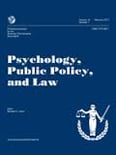 Mock jurors were randomly assigned to view either nongruesome photographs or gruesome photographs in color or black and white. Color gruesome photographs, compared to nongruesome photographs, increased convictions due to the disgust reactions they elicited. This was especially pronounced for mock jurors with relatively higher awareness of their bodily sensations. The effects of gruesome photographs in color on disgust and verdicts were eliminated when the same photographs were presented in black and white. This is the bottom line of a recently published article in Psychology, Public Policy, and Law. Below is a summary of the research and findings as well as a translation of this research into practice.
Mock jurors were randomly assigned to view either nongruesome photographs or gruesome photographs in color or black and white. Color gruesome photographs, compared to nongruesome photographs, increased convictions due to the disgust reactions they elicited. This was especially pronounced for mock jurors with relatively higher awareness of their bodily sensations. The effects of gruesome photographs in color on disgust and verdicts were eliminated when the same photographs were presented in black and white. This is the bottom line of a recently published article in Psychology, Public Policy, and Law. Below is a summary of the research and findings as well as a translation of this research into practice.

Featured Article | Psychology, Public Policy, and Law | 2017, Vol. 23, No. 3, pp. 336-350
Seeing Red: Disgust Reactions to Gruesome Photographs in Color (but not in Black and White) Increase Convictions
Authors
Jessica M. Salerno, Arizona State University
Abstract
Jurors are often exposed to emotionally disturbing gruesome photographs of victims of extreme violence. Judges must determine whether the informational value of these photographs outweighs their prejudicial effect on jurors and are left to their assumptions about juror psychology to do so. The current research draws upon the affect infusion model (AIM; Forgas, 1995) to investigate the affective mechanism through which gruesome photographs might operate. A mock jury experiment presented online adults (n=193) with murder trial evidence that included verbal descriptions of the victim’s injuries and neutral photographs in all conditions. Participants were randomly assigned to view (a) only the nongruesome photographs or additional gruesome photographs of the victim in (b) color, or (c) black and white (B&W). Color gruesome (vs. nongruesome) photographs increased convictions via the disgust they elicited. Consistent with the AIM, this was especially so for mock jurors with relatively higher awareness of their bodily sensations. The effects of gruesome photographs in color on disgust and verdicts were eliminated, however, when the same photographs were presented in B&W. A second experiment (n=354) replicated these results and also revealed that viewing color gruesome photographs significantly reduced mock jurors’ sensitivity to a manipulation of defense evidence strength— especially among jurors with relatively higher bodily awareness. Thus, gruesome photographs can increase convictions via direct and indirect affect infusion. Presenting gruesome photographs in B&W might reduce jurors’ emotional reactions while maintaining their probative information.
Keywords
jury decision making, emotion, gruesome photographs, disgust, blame
Summary of the Research
“The current studies draw upon the affect infusion model (AIM), which describes how negative emotion resulting from emotionally evocative information (e.g., gruesome photographs of a murder victim) can influence the way we process other information and ultimately color our judgments (e.g., verdicts) to be in line with that negative emotion. To test this model in a jury context, two experiments assessed mock jurors’ negative emotions and verdicts in a murder case that included verbal descriptions of the victim’s injuries and neutral photographs in all conditions. Mock jurors were randomly assigned to see only these nongruesome photographs, or additional gruesome photographs of the victim in B&W or color (Studies 1 and 2). This design enabled a test of how viewing gruesome photographs might increase convictions through direct and indirect affect infusion” (p.336).
“The second study manipulates defense evidence strength to test whether gruesome photographs increase convictions by biasing jurors’ processing of other evidence to justify blaming the defendant (i.e., indirect affect infusion). That is, whether gruesome photographs make mock jurors less sensitive to strong (vs. weak) defense evidence. Application of the AIM to this context also suggests an intervention that might ameliorate affect infusion effects on verdicts: presenting the gruesome photographs in a less emotionally evocative way (i.e., in B&W)” (p.336).
“…To test the affective mechanisms underlying the gruesome photographs effect, I hypothesized the following indirect and conditional indirect effects of gruesome photographs on verdicts. Hypothesis 1: Gruesome photographs in color (but not in B&W) increase convictions through increased negative emotion…Hypothesis 2: Color gruesome photographs will have a stronger effect as mock jurors’ bodily awareness increases…Hypothesis 3: Gruesome photographs in color will reduce jurors’ sensitivity to strong defense evidence. The AIM and CCM [culpable control model of blame] suggest that if jurors’ negative emotions are aroused by gruesome photographs, they will be less likely to process, retrieve, and apply evidence that is incongruent with their negative emotion and resulting need to blame someone for the transgression (i.e., defense evidence)” (p.339).
“Study 1 demonstrated support for the hypotheses. First, viewing color gruesome photographs of a murder victim made mock jurors more conviction prone because they increased disgust; but this effect did not generalize to less vivid B&W versions of the same photographs…Consistent with the AIM, even though the color and B&W gruesome photographs contained the same information relevant to the verdict decision, only seeing the relatively more vivid, color photographs produced enough disgust to be infused into verdicts and increase convictions. Second, this effect was stronger among mock jurors who tend to be relatively more aware of their bodily sensations…Of note, anger was not a mediator at any level of bodily awareness because-event though both anger and disgust increased convictions-the gruesome photographs increased only disgust” (p.342).
“Support for the three hypotheses designed to test the theory that viewing gruesome photographs in color will increase convictions through affective disgust-based channels were largely replicated. First, viewing the more vivid color gruesome photographs of a murder victim again made mock jurors more conviction prone because they increased disgust, relative to when they only read verbal descriptions of the injuries and saw neutral photographs. Second, this effect did not generalize to less vivid B&W versions of the same photographs. The one exception to the replication pattern, however, was that the direct comparison of color to B&W gruesome photographs dropped from significant in Study 1 to marginal in Study 2. Third, mock jurors’ disgust reactions to the color gruesome photographs increased convictions among those who tend to be relatively more aware of the sensations in their body. Consistent with Study 1, anger did not explain any effects of color gruesome photographs on verdicts” (p.344).
“The new hypothesis that presenting color gruesome photographs would make jurors less sensitive to strong defense evidence was also supported among those relatively higher in awareness of their bodily sensations. That is, reading strong (vs. weak) defense evidence made them perceive the defense evidence as stronger and, in turn, reduced their likelihood of voting guilty as long as their negative affect was not roused (i.e., in the no-gruesome control). This sensitivity to defense evidence strength was significantly reduced, however, when their disgust was roused by gruesome photographs in either color or B&W. Mock jurors with relatively lower bodily awareness were sensitive to defense evidence strength no matter how vivid the photographic evidence. This suggests that the desensitization among jurors with relatively higher bodily awareness was instigated by their affective response to the color gruesome photographs” (p.345).
Translating Research into Practice
“Judges are gatekeepers who decide whether emotionally disturbing evidence should be allowed in court. The Federal Rules of Evidence (Rule 403) state that judges can exclude such evidence if its prejudicial impact outweighs its probative value, but provide little guidance about how to judge such an issue. Thus, judges-as well as prosecutors and defense attorneys making admissibility arguments-are in need of psychological research that demonstrates the extent to which gruesome photographs can affect verdicts through probative and/or affective channels. Judges should be aware that color gruesome photographs can make jurors more conviction prone because they induce disgust-even when the photographs add little to no probative information beyond other evidence. Further, judges and attorneys should be aware that viewing gruesome photographs in color or B&W can prejudice jurors against strong defense evidence, rending them less sensitive to its strength and more motivated to discount it” (p.346).
“…The goal of the current studies is not to argue that the emotional response to gruesome photographs should always be considered prejudicial, but instead to demonstrate that they can affect verdicts via emotion directly and indirectly through biasing their processing of defense evidence-even when they do not provide additional probative information. It is up to judges making admissibility decisions to determine whether these emotion-drive effects are legally prejudicial and to weigh them against the photographs’ potential probative value. In cases where the color/quantity of blood is irrelevant to the legal issues being considered to judge guilt, presenting the gruesome photographs in a less prejudicial way (i.e., in a les vivid B&W version) an prevent jurors’ disgust response to color gruesome photographs from coloring their judgments…Finally, attorneys might want to consider assessing jurors’ likelihood of being relatively more or less aware of their emotional reactions in these types of cases during jury selection…” (p.346-347).
Other Interesting Tidbits for Researchers and Clinicians
“The current results make theoretical contributions by furthering our understanding of how and why gruesome photographs affect blame judgments. The current results provide support for the AIM’s direct affect infusion: mock jurors might consult their negative emotions heuristically while making a verdict judgment and, as a result, misattribute their negative emotion due to seeing a victim of a horrific crime to how they feel about the defendant’s guilt. The results also support the indirect route to affect infusion described by the AIM and the CCM: negative emotions resulting from color gruesome photographs might motivate jurors to discount strong defense evidence…The findings are also theoretically consistent with moral psychology studies demonstrating that disgust (but not other negative emotions like sadness) is infused into moral judgments of transgressions among those who are relatively more sensitive to their bodily sensations. Finally, the finding that disgust, but not anger, increased convictions contributes to the growing theoretical discussion of differences between the effect of anger and disgust on moral judgments” (p.346).
Join the Discussion
As always, please join the discussion below if you have thoughts or comments to add!






















